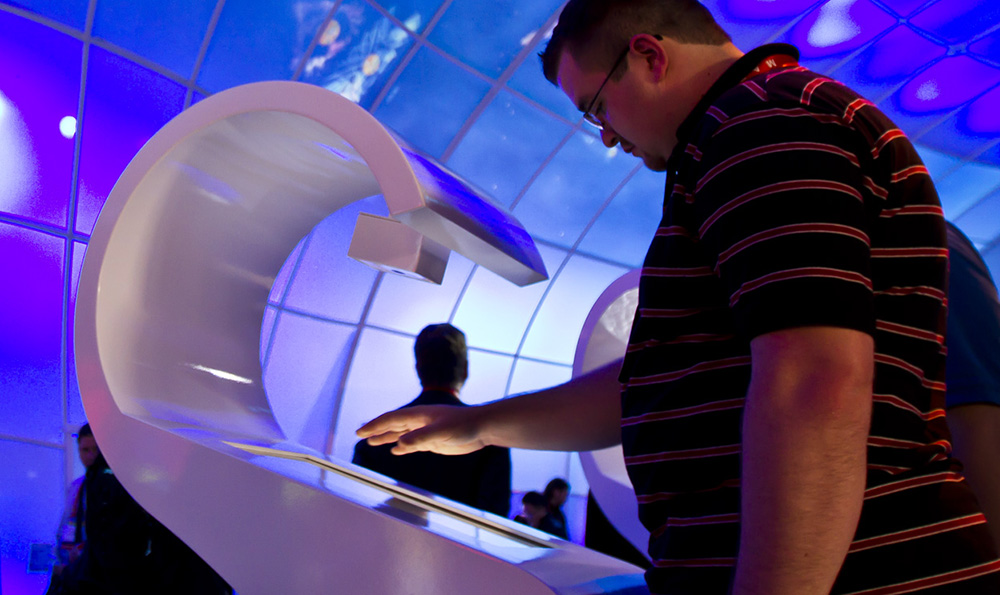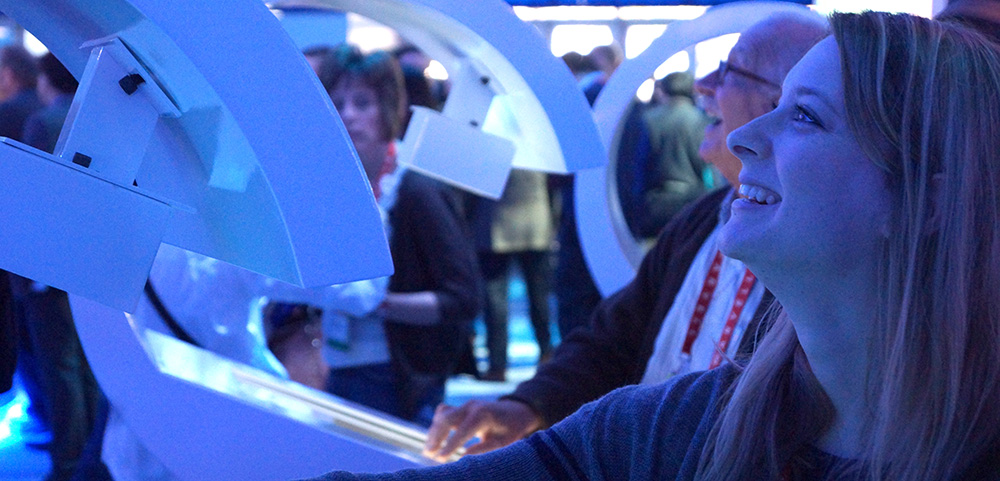2012 was the first year that Intel’s processors broke out of PCs and made their way into mobile and smart devices. This momentous shift for the Silicon Valley pioneer heralded the genesis of a fantastic new ecosystem of smart, mobile devices. The milestone was the focus of their booth presence at CES, and Intel needed to make a massive, memorable statement to communicate both the concept and importance of this new direction. The result was the Intel “Connect to Life” Experience, a booth-scale immersive interactive environment featuring the world’s largest multi-user, real-time-3D virtual life simulation.
The goal for “Connect to Life” was simple – convey the power of billions of connected devices by letting visitors feel what it’s like to become a part of that world. A very simple user experience was designed to maximize throughput and delight: place any object (a hand, keychain, etc.) into a scanning station and have it scanned, then look up to watch the silhouette of that shape fly up to the big screen. There, the outline would morph into a unique digital lifeform based on the “DNA” of that unique shape.
 An attendee scans the silhouette of his hand at an input station around the interactive environment.
An attendee scans the silhouette of his hand at an input station around the interactive environment.
Once “born,” the lifeform would swim off into the immersive environment and interact with lifeforms created by others. The interactions between these creatures were governed the “species” of the lifeforms: some were predators and would chase prey that would run away, others would seek out similar species and do a little dance when they finally encountered each other. The magic of the interactive environment was not only watching one’s shape come to life, but to follow it over the course of a few minutes and see it interact with the other creatures in the ecosystem. An extremely low-barrier to engagement paired with a (physically) large reward for interaction led to over 30,000 unique lifeforms created by attendees over a 4-day period.
 Delighted attendees watch their silhouettes coming to life on the display overhead.
Delighted attendees watch their silhouettes coming to life on the display overhead.
Spanning the entirety of Intel’s booth, conference attendees could use any of six custom-made stations around the perimeter of the tradeshow interactive to create a shape. Each unique bioluminescent lifeform was created on a 2200 square-foot projection-mapped surface, using 24 projectors. The system was powered by 12 custom-built PCs, all powered by Intel processors. We created an entirely bespoke platform featuring custom shaders and distributed 3D rendering, along with custom capture code for the input stations that turned any shape into a 2D outline to be sent to the 3D system for rendering.
Skyspace LA Immersive Observation Deck Experiences
One World Observatory Room-scale Data Visualization
Intel